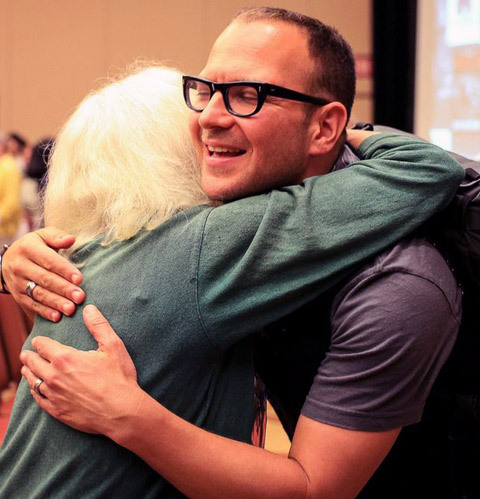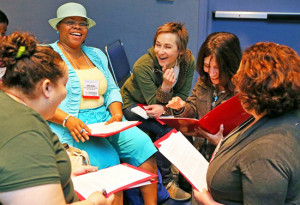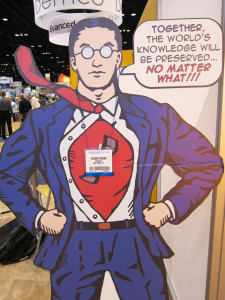
At the opening of the panel “Bleak New World: YA Authors Decode Dystopia” authors Lois Lowry (whose iconic The Giver won the Newbery in 1994 ), Patrick Ness (the Chaos Walking trilogy), Veronica Roth (the Divergent series), and Cory Doctorow (Homeland; Boing Boing coeditor) were asked how they would fare if they suddenly found themselves in one of the dystopian or apocalyptic situations detailed in their work. Some predicted survival. Others were convinced that they would immediately perish. Their answers drew laughs from the capacity crowd for the always-popular Friday-night Booklist Books for Youth Forum, moderated this year by Booklist Books for Youth Associate Editor Ann Kelley, but they also revealed an important component of dystopian fiction that makes it so appealing: the ability to place oneself intimately in the action. The “what if” factor draws readers into dystopian fiction, making them imagine how they would react if faced with calamity.
The four panelists each discussed the impact of dystopian fiction—works that depict life in an oppressive, sometimes futuristic society that emerges after a natural or man-made catastrophe—on teens and young readers, as well as the inspirations behind the authors’ work. Their personal stories spanned a range of tones. Lowry, the elder stateswoman of dystopian fiction, wistfully recounted her youth growing up on military bases—regimented, strict places that influenced the setting of The Giver. Roth revealed how she channeled personal struggles with anxiety disorder and control issues into the competing futuristic factions found in her work. Ness kept the crowd in stitches as he discussed his influences by answering five questions about dystopia: “Why is it so popular?” “What does it accomplish?” “How useful is the label ‘dystopia’?” “Why not ‘utopia’?” and “What’s the future of dystopia?” Doctorow held the audience rapt as he both praised and warned against the omnipresence of technology in our everyday lives, which, he believes, is the driving force behind much dystopian fiction.
The authors attributed the genre’s popularity among young readers to many factors, including teens’ curiosity about the future and technology and the stories’ inherent action and adventure. The prevailing opinion, however, was simple but also deep and profound: Young people love dystopian fiction because they identify with its themes. Teenagers’ lives are populated with oppressive figures (parents, teachers); collapsing worlds embodied in everyday events, such as a break-up or failing a school test; and the need to band together with friends to survive. Teens live in a dystopian world already, the panel concluded, and reading about it provides both comfort and catharsis.


